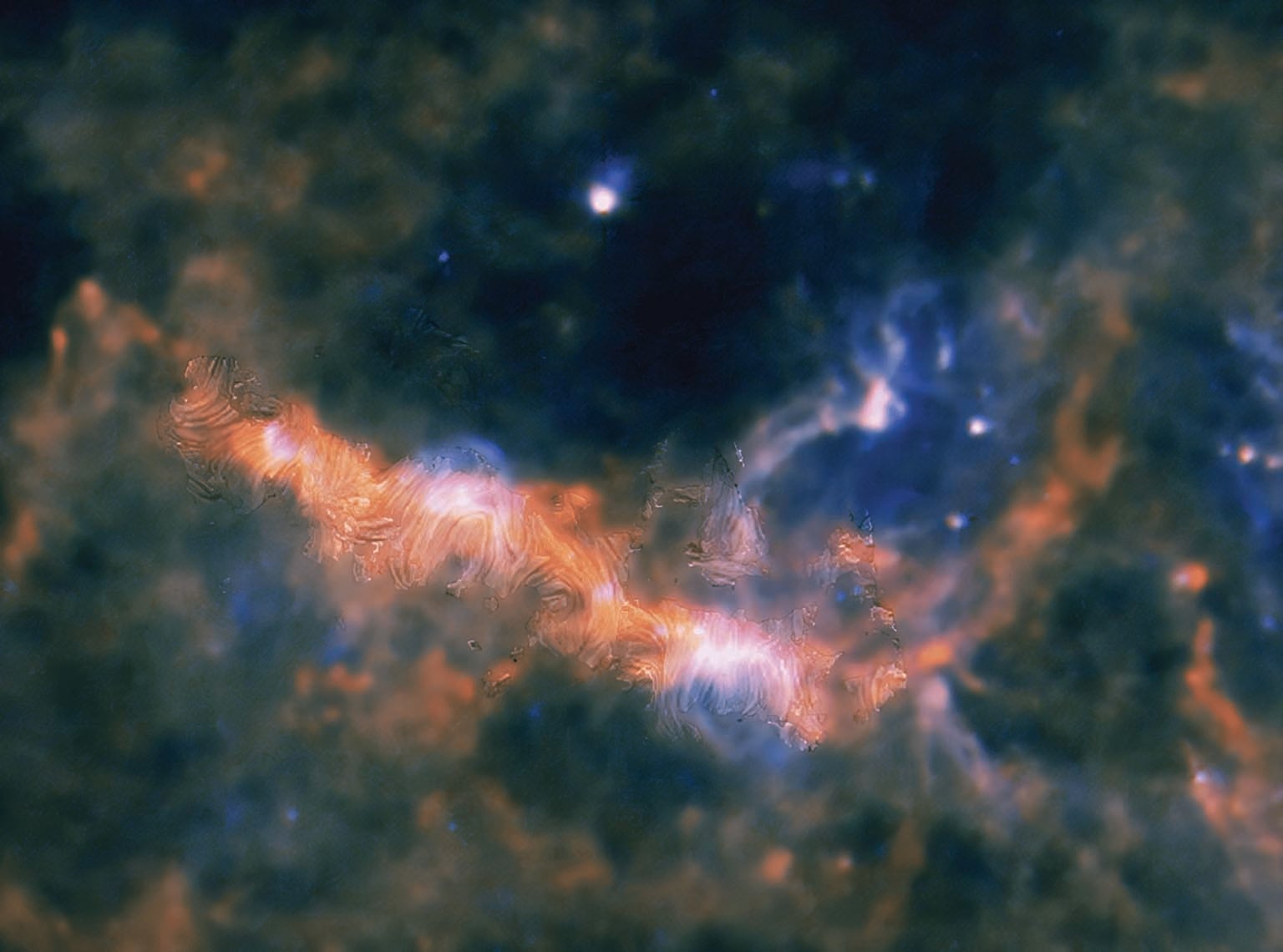
The Milky Way’s rotating disk of gas and dust gives rise to graceful spiral arms, which make up the galaxy’s most active star formation sites. Now researchers using an airplane-borne telescope high in Earth’s atmosphere have found a mechanism for how magnetic fields shape star birth in the dense filaments, or “bones,” that wind their way through these arms.
The new work describes how galaxy-scale magnetic fields, based on their orientation and strength, can both funnel material from one area to another and prevent the dust and gas that make up the densest regions from collapsing under gravity. These processes dampen star formation; without them, we’d have a much brighter night sky than we see today.
Ground-based telescope observations in 2015 confirmed the physical properties of the gas and dust bones that lined the Milky Way’s arms. But researchers did not know the precise role of magnetic fields in star-forming activity at smaller scales. “We knew the bones existed, but back then there was no way to map the details of their magnetic structure,” says Simon Coudé, a postdoctoral researcher at Worcester State University and the Center for Astrophysics | Harvard & Smithsonian. Coudé presented the new findings at the American Astronomical Society’s 2023 winter meeting.
For this work, the researchers are determining the fine-scale direction of these magnetic fields by measuring how dust particles align. Specifically, they’re quantifying how magnetic properties help keep gas and dust in the massive bones from collapsing to form stars. With data from instruments flown onboard the Boeing-747-borne telescope SOFIA in its final years of activity, “we could view the field structure in star-forming clouds across large swathes of the galaxy,” Coudé says.
One bone map from this project showed that magnetic fields tended to be perpendicular to the bone’s length in dense areas of active star birth and more parallel elsewhere. This could mean that the parallel fields from less dense regions feed material into denser ones, where fields are strong enough to limit gravitational collapse despite the additional star-forming material, the researchers say. They also found magnetic fields along other galactic bones strong enough to dampen star formation in all but the most active areas.
“We’ve known that entire galaxies are permeated by magnetic fields. Now we see these fields’ structures in the densest regions, where they’re sensitive to star formation,” says Enrique Lopez-Rodriguez, an extragalactic astronomer at the Kavli Institute for Particle Astrophysics & Cosmology at Stanford University, who was not involved in the study. Ultimately, he adds, this will lead to understanding how the balance between gravity and large-scale magnetic fields dictates star formation at the smallest scales, in other galaxies as well as our own.
Stay connected with us on social media platform for instant update click here to join our Twitter, & Facebook
We are now on Telegram. Click here to join our channel (@TechiUpdate) and stay updated with the latest Technology headlines.
For all the latest For News Update Click Here
